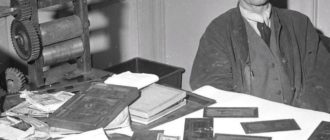
Kinetic art unusual moving works of artists instead of traditional static compositions
Kinetic art or kineticism is a direction of contemporary visual art in which a work created by an artist or some of its parts are in motion while the viewer is watching. In kinetic art, objects (movable sculptures) are driven by a motor, air energy, or by the observer himself. They can also make all kinds of sounds to enhance the aesthetic impact on a person.
Kinetic art is based on the author’s desire to embody the idea of the mobility of his work, which is inaccessible to traditional painting and sculpture. The viewer gets the opportunity to contemplate not a static, but an artistic object in active interaction with the environment.

History
Kinetic art has deep historical roots. The first attempts to create moving sculptures, mechanisms and toys date back to ancient times. Numerous documentary evidence of the creation of moving statues, figures of birds and animals by Greek craftsmen has survived. Most of these facilities had no practical purpose and were intended for the entertainment of the public.

After the invention of the spring-driven clock in the 16th century, automatons all kinds of mechanically-driven puppets became very popular in Europe. They knew how to move and often made different sounds. The most famous automaton maker was the Frenchman Jacques de Vaucanson.
From the beginning of the 18th century, massive clocks with moving mechanisms began to appear on town halls in many European cities. Stylized figures of people and animals every hour came into motion to the music, performing simple actions. And the richest persons of that time for their luxurious palaces ordered metal watch machines covered with gilding from the masters.

But until the beginning of the twentieth century, the production of moving art objects was limited to the sphere of arts and crafts.
Creating their works, the masters pursued a specific goal they sought to entertain the public.
The first to declare their desire to glorify the movement in their work were the supporters of one of the avant-garde art currents the futurists. For this, new ways of displaying reality were needed, different from those used in classical painting and sculpture.
Futurists, Dadaists, and Constructivists began experimenting creatively in an attempt to overcome the classical immobility of works of art. Among many other artists, Marcel Duchamp tried to solve this creative problem. In 1913 he created the famous ready-made “Bicycle Wheel” the first, according to most experts, a masterpiece of kinetic art.

In 1919, the founder of constructivism, Vladimir Tatlin, tried to embody the ideas of kineticism in Russia in the grandiose “Monument to the Third Communist International”. As conceived by the author, a huge 400-meter tower with various moving elements was supposed to decorate the building of the Comintern leadership. However, the project was never implemented in practice. Reduced models of the Tatlin Tower are today in the Tretyakov Gallery and several other museums around the world.
American Alexander Calder in the early 30s of the twentieth century began to create unusual dynamic structures from wire, which were driven by an electric motor or at the slightest vibrations of the air “mobiles”. Small original artworks made by Calder’s followers quickly gained popularity and found widespread use in interior design for interior decoration.

However, the full-fledged birth of kinetic art took place only in 1955, after the exhibition “Movement” in the Paris gallery Denise René (Denise René).
Here, along with samples of op-art, works by followers of kineticism were first presented to the general public:
- Yaacov Agam (born 1928);
- Bury Fields (Pol Bury; 1922-2005);
- Jean Tinguely (1925-1991).
- Jesús Rafael Soto (1923-2005).
The emergence of kinetic art has become a notable event in world culture. Over the next 10 years, the work of kineticists was in the spotlight of the general public. The super-avant-garde movement at that time embodied the most fashionable artistic trends of our time and caused heated debates among critics.
But already in 1965, interest in kineticism sharply declined, his ideas ceased to excite society. Kinetic art not only forever became a part of world culture, but also found practical application in the field of street advertising and design.

Outstanding representatives of kinetic art
Among the many outstanding artists of the mid-twentieth century, followers of kineticism occupy a worthy place. Today, their works are rightfully considered unique examples of the world cultural heritage. According to professionals, the most prominent representatives of kinetic art are:
- Nicolas Schöffer is a French artist of Hungarian origin. Inspired by the ideas of kinetic art, Scheffner not only created many three-dimensional moving works, but also became the pioneer of cybernetic art and video art.
- Julio Le Parc is an Argentine master of kineticism and op-art. In addition to wide recognition in the field of art, he is known for his active life position in the struggle for human rights against the dictatorial regimes of Latin America.
- Jean Tinguely is a Swiss creator of a huge number of kinetic works. Tinguely won special recognition from the public after creating unique fantastic moving cars that self-destruct in front of an amazed audience.
- Jesús Rafael Soto is a Venezuelan artist who became famous all over the world for his original vibrating paintings. Soto was an ardent supporter of the idea of actively attracting the viewer to participate in the creative process; throughout his life he studied optical illusions and used them in his work.












